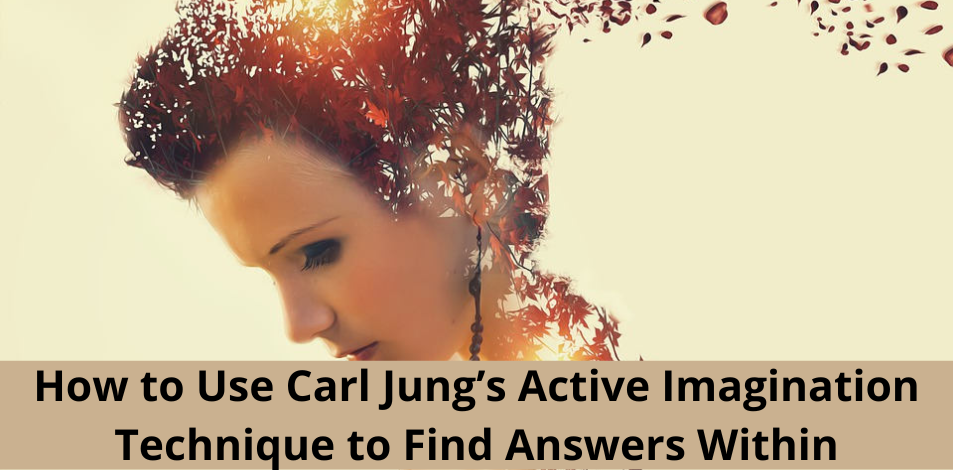
Anyone familiar with lucid dreaming knows the power of control in a dream. But what if you could simply pluck someone from your dreams and talk to them while you were awake? What questions will you ask? Can their answers help make us better people?
It may seem far-fetched, but Carl Jung developed the technique for doing just that. He called it “active imagination.”
What is active imagination?
Active imagination is a way to use dreams and creative thinking to open the unconscious mind. Developed by Carl Jung between 1913 and 1916, it uses images from vivid dreams that a person remembers upon waking.
Then, while the person is relaxed and in a meditative state, he remembers these images, but in a negative way. Allowing their ideas to remain on the images but allowing them to change and emerge into who they will become.
These new images can be expressed through various means, including writing, drawing, painting, and even sculpture, music, and dance. The goal is to allow the mind to associate freely. This gives our subconscious mind the opportunity to reveal itself.
Jung’s approach to active imagination takes dream analysis one step further. Instead of looking directly at the content of a person’s dream, the idea is to choose one image from a recent dream and let our minds wander.
By doing this, Jung hypothesized that we are staring directly into our unconscious minds. So, active imagination is like having a bridge from our conscious self to our unconscious self. But how is this useful?
Both Jung and Freud believed that only by delving into the deepest recesses of our unconscious minds can we address our fears and anxieties.
So, is active imagination really better than dream analysis or any other type of therapy for that matter? Well, just like in psychotherapy, it can be very effective. Of course, first, you need to know how to use it.
How active imagination works and how to practice it
- Getting started
Active imagination is best experienced alone, in a quiet place where there are no distractions. You will mainly be meditating, so find a comfortable and warm place.
Most people use dreams as a starting point for their active imagination. However, the goal of the exercise is to bridge the gap between your conscious and subconscious mind. As such, you can also use emotions such as recent frustration or feeling sad to start your session.
You may not be a visual person, but don’t worry. You can also use speak or type to start your session. For example, sit quietly and ask a person who you feel could help you connect with your inner self. Or write a question on a piece of paper and then sit back and see what happens.
- Delve into your imagination
So, to start, remember a shape, object, or feeling from a dream or important situation.
For those who visualize, the image of your dream may begin to shift and take on another form. If you ask a question you might hear yourself, answer it. If you’ve written a question, you may find the answer coming your way.
For example, perhaps you had a dream and saw your neighbor in a cabin on a boat sailing away. You can ask your neighbor why she is on a boat sailing away from you. Or you can simply watch to see if the image changes to something different.
While these changes are occurring, you should be relaxed, calm, and accepting of what is happening.
Whatever happens, you should write down the details. Again, how you write down the details is up to you. You can write, draw, paint, record your voice, and in fact, you can use any medium that allows you to express what you feel.
It is important to note a few points at this stage. Young stressed the importance of not falling into the trap of viewing negative imagination.
“The intention should not be to control the image, but to notice the changes that will arise from automatic associations. You yourself must enter into this process with your own reactions… as if the drama being played out before your eyes were real.” Carl Jung
You should also keep in mind your personal values, moral code, and ethics. Don’t let your mind wander into the world of something you would never do in real life.
- Session analysis
Once you feel that there is no more information to collect, you should stop the session and take a short break. This is so you can return to your normal state of consciousness. You will need all your abilities for the next part, which is analyzing the active imagination session.
Now is the time to interpret the details from your session. Look at what you’ve produced in a new light. Is there anything that seems immediately obvious to you? See if there is a message within the writings or drawings.
Does a word or image remind you of something? Does anything make sense or click with you? What feelings or emotions do you get? Try to interpret the message coming from your subconscious mind.
If you receive a message or answer, it is also important to acknowledge it. After all, what’s the point of all this introspection if you don’t act on it now?
For example, an active fantasy session of your neighbor and your boat may have led you to realize that you are neglecting your family. In this case, why not make an effort to reach out to them?
Or maybe a shape formed that was dark and scary to you. This may be a reflection of your shadow self. So your session could indicate something inside you that you do not want to consciously accept.




